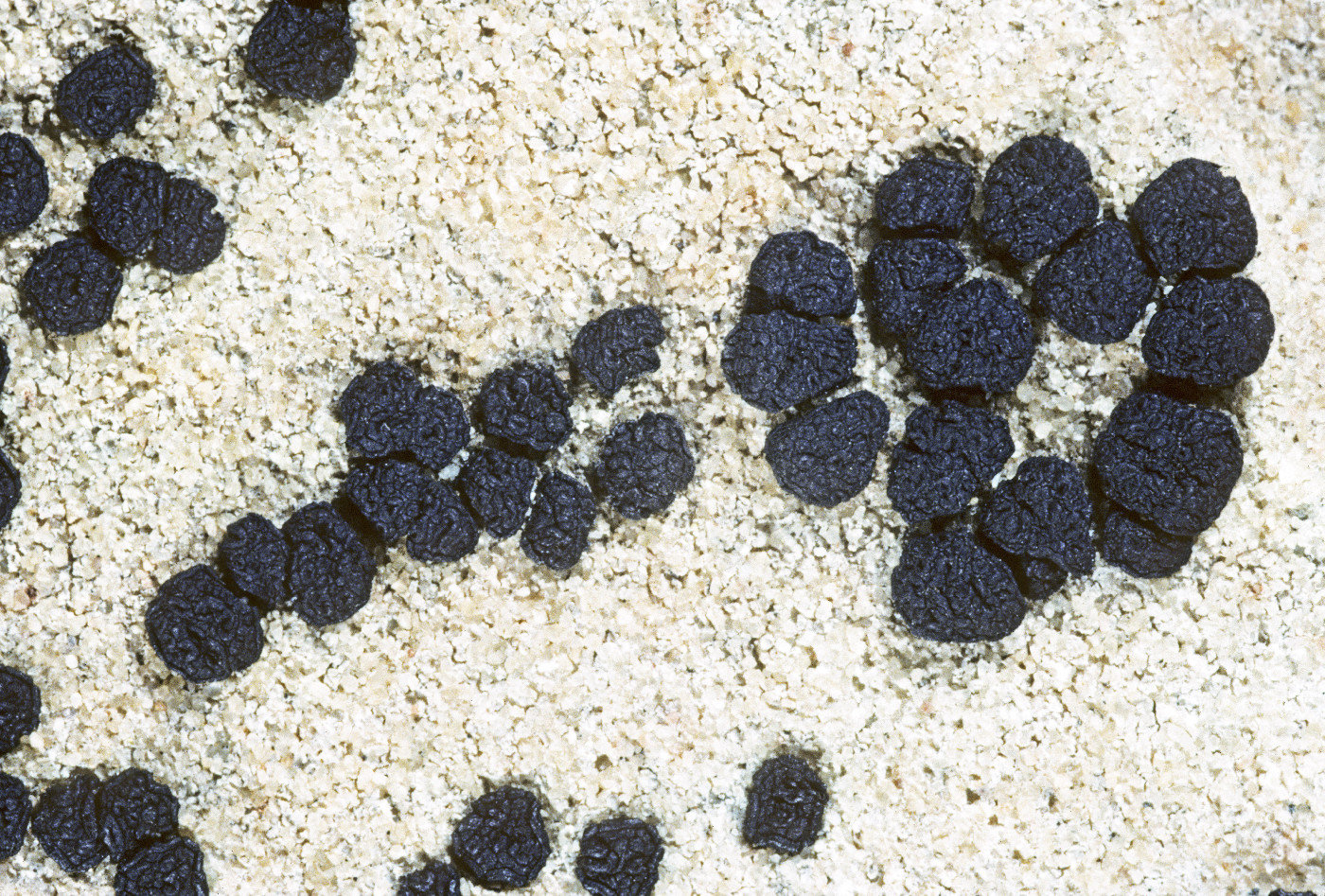
Consortium of Lichen Herbaria
- building a Global Consortium of Bryophytes and Lichens as keystones of cryptobiotic communities -
- Home
- Search
- Images
- Species Checklists
- US States: O-Z >
- US National Parks
- Central America
- South America
- US National Parks
- Southern Subpolar Region
|
Family: Acarosporaceae |
Nash, T.H., Ryan, B.D., Gries, C., Bungartz, F., (eds.) 2007. Lichen Flora of the Greater Sonoran Desert Region. Vol 3. Life Habit: lichenized or lichenicolous Thallus: endolithic or chasomolithic, and sometimes indistinctly areolate photobiont: primary one a chlorococcoid green alga, secondary one absent Ascomata: apothecial, abundant, broadly attached, or immersed in pits in substrate disc: black to dark red, round to irregular, flat to convex; with or without a central umbo; usually gyrose margin: lecideine, prominent, often splitting and becoming indistinguishable from gyrose disc true exciple: parathecium: outer layer black and carbonized, inner layer pale brown to hyaline epihymenium: pale red to yellow or black, thick, conglutinated, c. 15 µm thick hymenium: generally hyaline, 60-150 µm tall, conglutinated or not; paraphyses: 1-2.5 µm wide, rarely or abundantly anatomosing and branching; apices often expanded subhymenium: usually hyaline hypothecium: usually indistinct (except in P. lapponica) asci: clavate, polyspored, tholus K/I- or slightly amyloid ascospores: hyaline, simple, broadly ellipsoid, 3-7 x 1-4 µm Conidiomata: pycnidial, apothecia-like, immersed or emergent, carbonized, often cracked conidia: hyaline, minute, simple, ellipsoid Secondary metabolites: none detected Geography: Europe, Asia, North America, New Zealand and Tasmania Substrate: on silicaceous or carbonaceous rocks, rarely on soil. Notes: The hymenial measurements do not include the carbonized layer above the epihymenium. Spore measurements are based on mature spores outside the ascus in water; they can be quite scarce but are generally very regular in width. The paraphyses are measured halfway up hymenium. The size of apothecia is helpful in determining species. The most clearly distinguishing character of Polysporina from other polyspored genera is the carbonized, umbonate or gyrose discs with a carbonized parathecium. |
Powered by Symbiota









